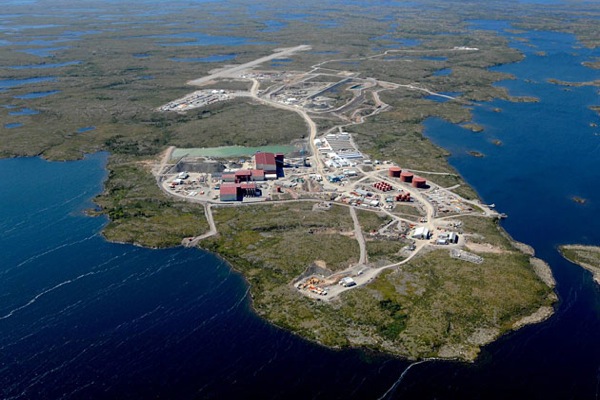
The Snap Lake Diamond Mine is located about 220 km northeast of Canada’s Yellowknife, Northwest Territories. According to De Beers, it was their first mine outside Africa and Canada’s first completely underground diamond mine. (Courtesy of De Beers)
De Beers, the world’s biggest diamond miner by revenue, is facing increased opposition to its planned chloride levels hike at Snap Lake mine, in Canada’s Northwest Territories.
According to CBC News, the firm wants to change its water licence to double the current chloride limit, which is already two and a half times the level recommended for the protection of fish.
In a letter to the company earlier this month, the territorial government threatened De Beers with enforcement actions. Inspectors are currently is taking water samples that could support a prosecution.
The chloride and other salts detected at the lake come from wastewater being pumped from De Beers underground mine. If the company is found to have transgressed its water licence, it will have to shut down the mine.
In a technical report submitted to the Mackenzie Valley Land and Water Board, the company acknowledged the mine’s cumulative effects on the concentrations of total dissolved solids (TDS), chloride, fluoride, sulphate, and hardness at the outlet of lake. However, proposes several mitigation models to tackle the situation.
A spokesperson for the company told MINING.com that while TDS volumes reported since the opening of Snap Lake mine have risen more quickly than originally predicted, the levels have been shown to be protective of aquatic life.
He added the firm has been working closely with regulatory officials and Aboriginal communities since Snap Lake started, trying to be proactive in terms of environmental and community engagement. “We regularly host visits with our Aboriginal partners and just earlier this week, we hosted our latest First Nations delegation at the mine to show them our water management program, which included taking them underground to see first-hand the source of the high-TDS water,” he said in an e-mailed statement.
Three Northwest Territories aboriginal groups have already warned they will attend a public hearing next week. They plan to ask authorities to make the miner cut the amount of chloride it is pumping into the lake.
Snap Lake was the firm’s first diamond mine outside of Africa, and Canada’s ‘ first completely underground diamond mine.
3 Comments
Mark Harder
It seems contradictory. DeBeers wants to propose remediation and double its Cl allowance at the same time, no? IMHO, it’d be better to judge their remediation proposals first, without any commitment to increase allowed TDS levels whatsoever.
Andy Muller
What has chloride got to do with diamond mining? We never use any chemicals in the recovery of diamonds ever…?? Water is used minimally and recycled all the time there is no waste water?? No idea what this is about. You can run 2 pans for a week on 500 gallons of water if you do not recycle? Otherwise the water is used over and over again.. adding a few gallons per week. No environmental contamination at all we only use Mud and water, no chemicals. Strange… Unless it is the Toilet water they are talking about LOL
captain_pudding
It’s not part of the process, it’s ground water that needs to be pumped out of the excavations.